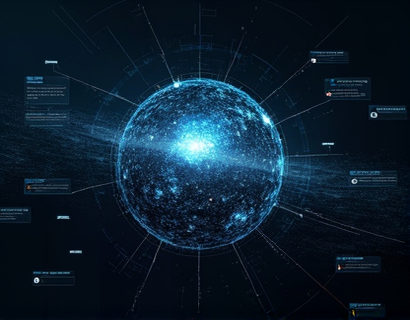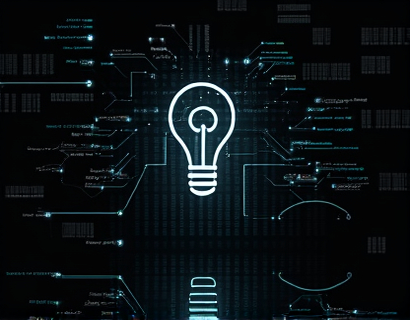Maximize Your Multi-Channel Announcements: A Strategic Guide for Businesses and Individuals
In today's fast-paced digital landscape, making effective announcements across multiple channels is crucial for businesses and individuals aiming to maximize their reach and engagement. This strategic guide provides comprehensive insights and expert strategies to streamline your announcement process, enhance message visibility, and optimize your communication strategy for better audience connection. Whether you are a business owner or an individual looking to amplify your message, this guide offers a user-friendly approach to managing announcements and maximizing visibility across various platforms.
Understanding Multi-Channel Communication
Multi-channel communication involves using multiple platforms and channels to reach your audience. This approach ensures that your message is seen and heard by as many people as possible, increasing the likelihood of engagement and conversion. The key to successful multi-channel communication lies in consistency, clarity, and strategic planning. Each channel has its unique characteristics and audience, so it's essential to tailor your message and approach to fit each platform.
Identifying the Right Channels
Before diving into the strategy, it's crucial to identify the most effective channels for your audience. Common channels include social media platforms like Facebook, Twitter, Instagram, and LinkedIn, as well as email newsletters, blogs, and messaging apps like WhatsApp and Telegram. Consider where your target audience spends their time and what types of content they engage with most. For instance, LinkedIn is ideal for professional updates and B2B announcements, while Instagram is perfect for visual content and younger demographics.
Crafting a Unified Message
Consistency is key in multi-channel communication. Your message should be clear, concise, and aligned across all platforms. Start by crafting a core message that captures the essence of your announcement. This message should be adaptable to fit the format and tone of each channel while maintaining its core integrity. Use key points and bullet lists to ensure clarity and ease of understanding. Consistent branding, including logos, color schemes, and language, helps build recognition and trust with your audience.
Timing and Frequency
Timing and frequency play a significant role in the effectiveness of your announcements. Posting at the right time ensures that your message reaches your audience when they are most active and receptive. Use analytics tools to determine the best times to post on each platform. For example, LinkedIn is often best posted during business hours, while Instagram can benefit from morning and evening posts. Additionally, consider the frequency of your announcements to avoid overwhelming your audience. A balanced approach, such as weekly or bi-weekly posts, can help maintain engagement without causing fatigue.
Leveraging Visual Content
Visual content is a powerful tool for capturing attention and enhancing message retention. Images, videos, and infographics can make your announcements more engaging and memorable. Use high-quality visuals that are relevant to your message and optimized for each platform's specifications. For instance, Instagram and Facebook prioritize vertical videos, while LinkedIn favors professional, well-composed images. Ensure that your visuals are consistent with your brand and complement your text-based content.
Utilizing Call-to-Actions
A strong call-to-action (CTA) is essential for driving desired actions from your audience. Your CTA should be clear, compelling, and placed prominently in your announcement. Whether you want your audience to visit your website, sign up for a newsletter, or share the post, your CTA should guide them towards the next step. Use action-oriented language and make sure the CTA stands out visually. For example, "Learn More" or "Join Us" can be effective CTAs that encourage engagement.
Monitoring and Analyzing Performance
To optimize your multi-channel announcements, it's crucial to monitor and analyze their performance regularly. Use analytics tools provided by each platform to track key metrics such as reach, engagement, click-through rates, and conversion rates. Analyze the data to identify which channels and types of content perform best and adjust your strategy accordingly. A/B testing different messages, visuals, and posting times can help you refine your approach and improve results over time.
Building a Content Calendar
A content calendar is an invaluable tool for managing and organizing your multi-channel announcements. It helps you plan and schedule content in advance, ensuring a consistent flow of information to your audience. A well-structured content calendar should include the date, channel, message, visuals, and CTAs for each announcement. This planning process allows you to coordinate your efforts, avoid duplication, and ensure that your announcements align with broader marketing goals and events.
Engaging with Your Audience
Engagement is a two-way street. Encourage your audience to interact with your announcements by asking questions, requesting feedback, or inviting comments. Respond promptly to comments and messages to build a relationship with your audience. Active engagement not only increases visibility but also fosters loyalty and trust. Use social listening tools to stay informed about industry trends and audience sentiments, allowing you to tailor your announcements to current conversations and concerns.
Cross-Promotion and Collaboration
Collaborating with other businesses, influencers, or industry experts can expand your reach and credibility. Cross-promotion involves sharing each other's content to tap into new audiences. Partner with complementary brands to co-create content that benefits both parties. For example, a fitness brand could collaborate with a nutritionist to create a series of posts on healthy living. These collaborations can introduce your announcements to a broader and more targeted audience.
Adapting to Platform-Specific Features
Each social media platform and channel has unique features that can enhance your announcements. For instance, LinkedIn's articles allow for in-depth content with embedded media, while Twitter's character limit necessitates concise messaging. Familiarize yourself with the features of each platform and use them to your advantage. For example, use LinkedIn to share detailed industry insights and Twitter for real-time updates and quick announcements.
Maintaining Brand Voice and Tone
Consistency in brand voice and tone is crucial for building a strong brand identity. Your announcement style should reflect your brand's personality and values, whether it's professional and formal or friendly and casual. Use language and tone that resonate with your target audience and align with your brand's image. This consistency helps in building a recognizable and relatable brand presence across all channels.
Measuring and Reporting Results
To demonstrate the effectiveness of your multi-channel announcements, it's important to measure and report results regularly. Use a combination of quantitative and qualitative metrics to assess performance. Quantitative metrics include reach, impressions, engagement rates, and conversion rates, while qualitative metrics might involve audience feedback and sentiment analysis. Present these results to stakeholders in a clear and concise manner, highlighting successes and areas for improvement.
Continuous Improvement and Adaptation
The digital landscape is constantly evolving, and what works today may not work tomorrow. Stay informed about new trends, features, and best practices in multi-channel communication. Be willing to experiment with new strategies and tools to stay ahead of the curve. Continuous learning and adaptation are key to maintaining and improving the effectiveness of your announcements over time.
By following these strategic guidelines, businesses and individuals can maximize the impact of their multi-channel announcements. Streamlining your communication process, enhancing message visibility, and optimizing your strategy will lead to better audience connection and ultimately, greater success in achieving your communication goals.










































